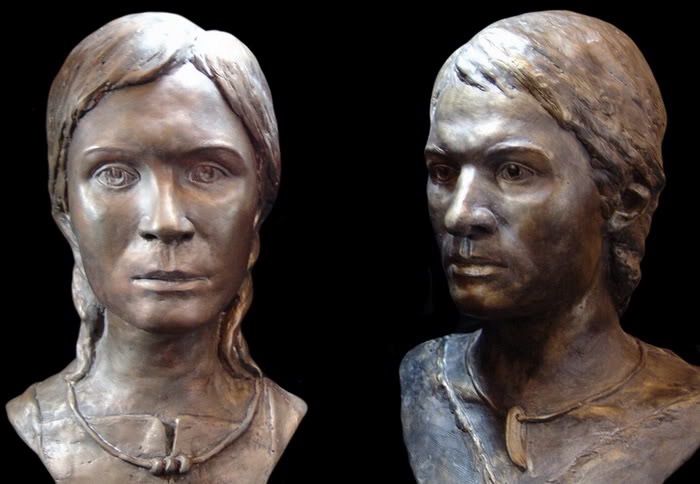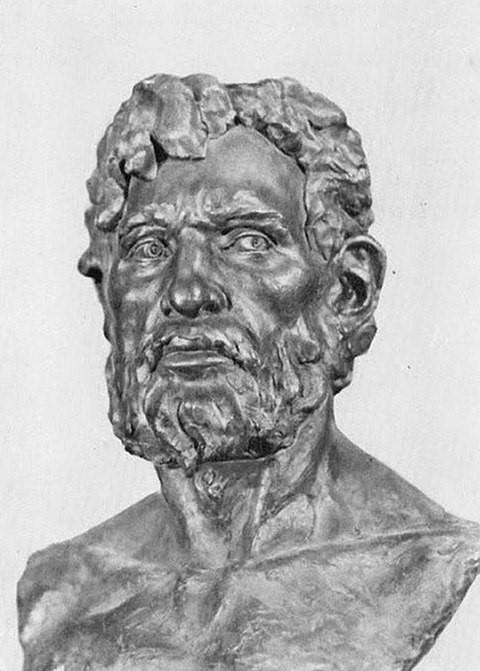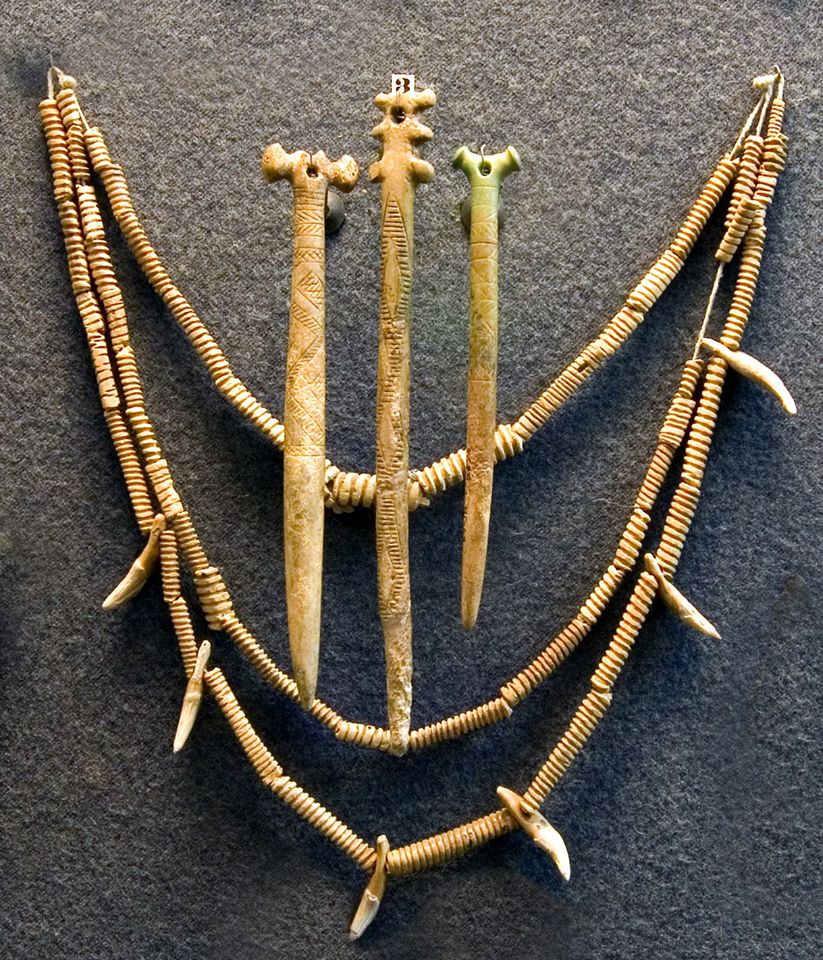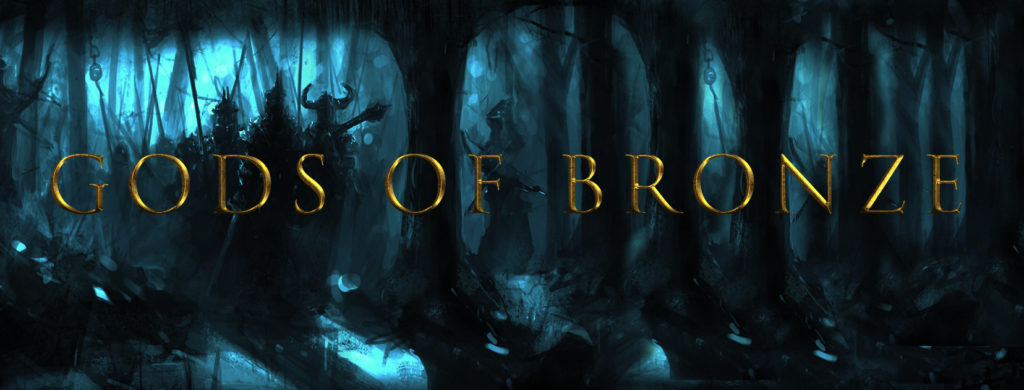The Yamnaya culture was a late Copper Age to early Bronze Age archaeological culture of the the Pontic steppe (north of the Black Sea) dating to 3300–2600 BC.
Its name derives from its characteristic burial tradition: yamnaya is a Russian adjective that means ‘related to pits’, and these people used to bury their dead in tumuli (the famous kurgans – which we call burial mounds in Britain) containing simple pit chambers.
They lived primarily as nomads, with a chiefdom system and wheeled carts that allowed them to manage large herds.

The Yamnaya culture is identified with the late Proto-Indo-Europeans, and is the strongest candidate for the urheimat (original homeland) of the Proto-Indo-European language (of which English is just one of many descendants).
They possibly invented the wheel, they may have been the first to domesticate and ride horses, and they invented 4-wheeled, ox-drawn axeled wagons that enabled them to drive herds of cattle across the steppes.
Because of these innovations they were probably the first people in history to solve the problem of living on the arid, barren grasslands of the Eurasian steppe rather than in the river valleys that cross it. It’s likely that they wintered in river valleys and took their cattle onto the steppe in summers for grazing.

They ate horses, cattle, sheep, pigs, and also hunted saiga antelope and other animals of the steppe and river valleys (like the Don and the Volga and their tributaries).
They also drank milk, possibly the first people to develop lactose tolerance into adulthood.
Some did a bit of farming, growing millet and amaranth but it wasn’t a huge part of their diet.

Thanks to their incredibly tough lifestyle, their warlike patriarchal culture and their high protein diet, they were big people, with large, robust skulls and big bones. Archaeologists immediately recognise their remains versus those of the Neolithic farmers they replaced who were smaller with slighter skulls and gracile frames.
These were incredibly successful.
So much so that they expanded out of the steppes, along with other related peoples, and into Neolithic Europe.
Different regions of “Old Europe” experienced different levels of interaction with these invading Yamnaya and other steppe people.
In the early 20th century it was imagined that they swept down from the plains conquering all before them. That is somewhat shown in the archaeological evidence where the old cultural artefacts disappear when the Yamnaya show up. But it was more complicated and gradual than that.
Much of the expansion from the Black Sea all the way (eventually) to the British Isles was driven by bands of young men leaving their clan to raid and dominate others beyond. Over hundreds of years and many generations, this drove the expansion west and east.

There were also great “folk migrations” where whole peoples seemed to up and move thousands of miles very quickly, to as far away as India and China, bringing the technology of horse riding, wagons, chariots, and bronze working to those places for the first time.
Some offshoots even briefly conquered ancient Egypt, bringing the chariot and other technology with them. (By the time they reached Egypt they were a conglomeration of steppe and Semitic peoples).
Apparently, Tutankhamen had R1b haplogroup (so do I) which shows that both of us descend (father to son, father to son, on down the centuries) from a warrior of the steppe.
Most men in Britain have the R1b hapologroup which shows how successful these lads were.
The Yamnaya and their descendants and cousins replaced to some extent or another the people in Europe before them.
European people look and speak how they do because these wagon driving, horse riding warriors are our ancestors.
Read more about the Yamnaya on the Wikipedia page but as always do so with a pinch of salt.
The Yamnaya feature in my Bronze Age fantasy series GODS OF BRONZE. You can read the novella THE WOLF GOD for free now by signing up to my email newsletter.



I here that those who drink raw milk do not get lactose intolerant. I am told it is because pasteurization kills all the good bugs & thing in milk that help body digest & use all in milk. Pasteurizing was meant to kill possible (if it got contaminated) bad bugs. Instead of testing to see if it is contaminated they just decided to pasteurize all. Because at the time science was not as advanced so they had no way to know they were doing the harm. As always we have a hard time changing our old harmful ways for new better ones especially when it turns out our ancestors knew better than we did.
Thought pasteurization is a preservation technique, so milt will keep more than a day
This is an older article and comments, but in case anyone else stumbles across it: No, lactose intolerance has NOTHING to do with pasteurization. It’s related to genetics. People living on a milk-based diet would have an evolutionary advantage if they could tolerate milk. Simple.
As someone who is a six foot, 210 lb. male who is half Swede (possibly 50% Saami) half Dane with ASD (Autism spectrum disorder), is it possible that a Yamna possessing ASD invented the wheel, the two wheeled cart and the four wheeled wagon, revolutionizing that culture and eventually the rest of the world? The role of people with ASD in history has been overlooked. The existence of ASD or lack of it may explain the sporadic nature of technological development. Those with ASD think within the box only when forced by convention.